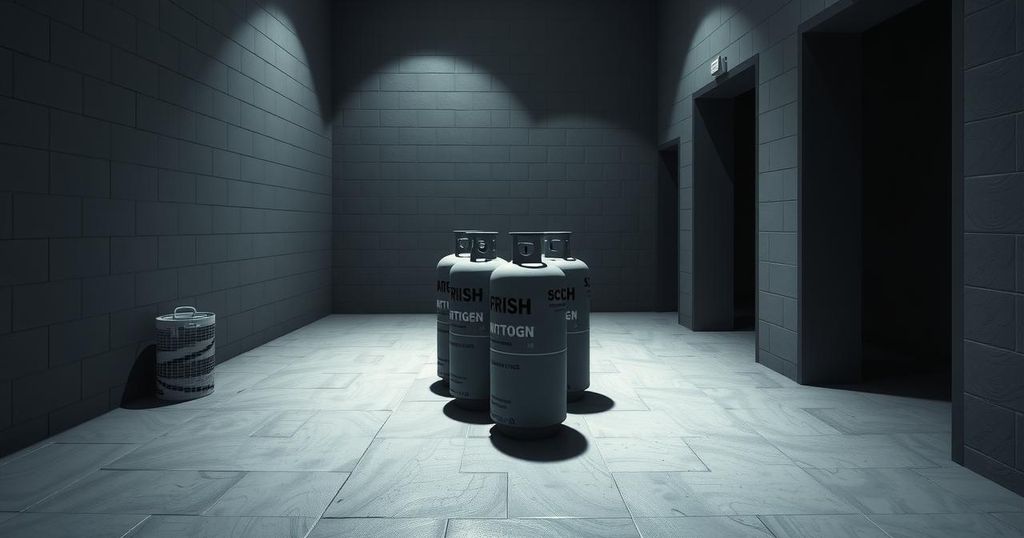Crime
ADVOCATE, AFRICA, ANGOLA, CAROLINE TILLMAN, CHRIS GRANGER, CRIME, DAR, DARREL VANNOY, DEATH PENALTY, DEI, DEIDRE THOMAS, FEDERAL PUBLIC DEFENDER ’ S OFFICE, FEDERAL PUBLIC DEFENDER ’ S OFFICE FOR THE MIDDLE AND WESTERN DISTRICTS OF LOUISIANA, FLORENCE RUFFIN, GUN VIOLENCE, HELEN PREJEAN, HOFFMAN, JESSIE HOFFMAN, JESSIE HOFFMAN JR, JESSIE HOFFMAN, JR, JR, JUSTICE, LA, LA. HOFFMAN, LAUREN SAPP, LAW, LOUISIANA STATE PENITENTIARY, MARY, MARY “, MARY “ MOLLY ” ELLIOTT, MOLLY ” ELLIOTT, MURDER, NEW ORLEANS, NEW ORLEANS ADVOCATE, NORTH AMERICA, TIMES - PICAYUNE, UNITED STATES
Marisol Gonzalez
0 Comments
Louisiana Executes Jessie Hoffman Jr. Using Nitrogen Gas: A Historic First
Jessie Hoffman Jr. was executed in Louisiana using nitrogen gas, the state’s first execution by this method. Convicted for the 1996 murder of Mary “Molly” Elliott, Hoffman’s execution follows a 15-year moratorium on deaths in the state. Despite objections regarding the execution method’s constitutionality, authorities deemed the process effective and consistent with legal protocols. Nationally, several states are exploring nitrogen hypoxia as an execution method amidst declining public support for capital punishment, with Louisiana expecting more executions in the near future.
Louisiana executed Jessie Hoffman Jr. on March 18, 2025, marking the state’s first use of nitrogen gas as an execution method. Convicted for the 1996 murder of Mary “Molly” Elliott, Hoffman declined to make a final statement or request a last meal prior to his execution. The state resumed executions after a 15-year hiatus, citing a need for justice for victims’ families.
Hoffman was pronounced dead at 6:50 p.m., following a 19-minute nitrogen gas procedure, deemed “flawless” by officials. While witnesses noted some involuntary movements during the execution, they did not perceive any irregularities. Gina Swanson, a media observer, described the process as “clinical” and “procedural,” asserting it aligned with established protocols.
Hoffman’s attorneys attempted to halt the execution by asserting the nitrogen method could violate the Eighth Amendment and encroach upon his religious practices. Despite their efforts, both the Supreme Court and a state district judge upheld the execution order.
During the procedure, Hoffman was strapped to a gurney with a full-face mask while pure nitrogen gas was administered, effectively depriving him of oxygen. Witnesses, including Hoffman’s spiritual advisor, noted that there were signs of breathing and movement during the execution. State officials affirmed that these reactions were involuntary responses to oxygen deprivation.
This execution follows Alabama’s precedent, where nitrogen gas was first used in 2022. As of now, several states, including Louisiana, have authorized nitrogen hypoxia for executions as part of an effort to expand execution methods. Despite national declines in executions due to legal and public opinion challenges, Louisiana’s Attorney General indicated more executions are anticipated this year, asserting that justice could not be delayed any longer.
In conclusion, Jessie Hoffman Jr.’s execution using nitrogen gas represents a significant shift in Louisiana’s approach to capital punishment, as it is the first instance of this method being implemented in the state. Despite challenges and controversies surrounding the nitrogen gas procedure, officials reinforced its compliance with legal standards. The execution, positioned as a long-awaited measure of justice for the victim’s family, also reflects broader trends in how states are adapting execution methods amid evolving public sentiments about capital punishment.
Original Source: apnews.com




Post Comment